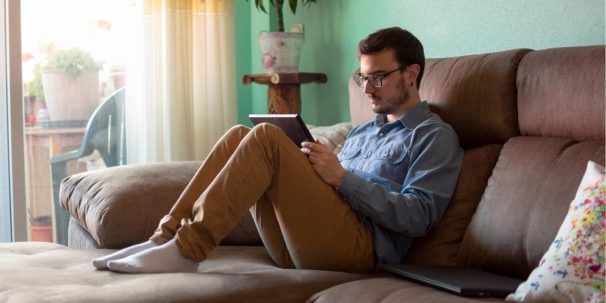What is quarantine and why is it effective?
Discover the history of quarantine, learn why it's used to prevent the spread of infectious disease, and find out how to implement self-quarantine measures.

This blog was published on 3 April 2020. For the latest advice on how to respond to the coronavirus, please consult the World Health Organization and take guidance from your national government’s latest advice.
Before 2020, the word quarantine might have reminded you of pets in cages at border control or tropical disease prevention in history books.
However, in the past four months, quarantine has become something of a buzzword that’s splashed over front pages and rings out of radios and televisions all over the English speaking world.
What is quarantine?
The current Oxford dictionary definition of quarantine is:
a state, period, or place of isolation in which people or animals that have arrived from elsewhere or been exposed to infectious or contagious disease are placed.
However, the concept of putting people who could be unwell into isolation isn’t new.
A short history of quarantine
The word quarantine comes from the Italian word, ‘quarantena’, which means ‘forty days’.
It came about in the Venetian language in the fourteenth-century, and was used to describe the period all ships at the time were required to spend isolating before anyone could go ashore during the bubonic plague epidemic.
According to the Centers for Disease Control and Prevention (CDC), this was the first recorded example of quarantine as we know it today.
Similar, more recent examples include the 1799 outbreak of yellow fever in Philadelphia in the USA.
The government quarantined hundreds of sailors in a hospital just outside of the city in an attempt to stop the spread. However, the fever comes from mosquitos so it was the cold winter which finally saw the outbreak end.
Americans faced quarantine again in New York in 1892 after a city-wide outbreak of Typhus. It was suspected to have come from a boat carrying immigrants who then spread it amongst tenement housing.
Tents were used to house suspected exposed cases on an island in the East River.
One of the most widespread pandemics before coronavirus, the flu pandemic of 1918, also saw many efforts made towards enforcing quarantine and isolation.
Public gatherings were banned and people were asked to stay at home, though it proved difficult to enforce these measures on a wide scale.
What does quarantine mean in terms of the coronavirus?
Quarantine during the time of the coronavirus means separating and restricting movement for anyone who is or may have been exposed to the virus. This means confining the person in question to one place, be it a medical facility or their home.
Being in quarantine means you can monitor when symptoms develop and, if it turns out you have been exposed, you will not spread the virus to others as you and the virus will remain in your home.
Quarantine is a public health strategy and the World Health Organisation advises that it “may delay the peak of an epidemic in an area where local transmission is ongoing”.
What’s the difference between self-isolating and quarantine?
Though both self-isolation and quarantine exist to decrease public exposure to a disease, according to the CDC:
- isolation separates people with a contagious disease from people who are not ill
- quarantine separates and restricts the movement of people who are not ill but may have been exposed to a contagious disease to see if they become ill.
In other words, quarantine isn’t reserved for people who are ill. People who appear healthy can still be quarantined.
Whilst there is a difference between isolation and quarantine, the measures you take to self-quarantine or isolate at home are similar.
How to self-quarantine
Separation
Unless you live alone, when living in quarantine, WHO recommends you should make sure you have a room to yourself that is ventilated. Preferably, you’ll also have your own bathroom.
You should not leave the house for non-essential reasons (eg to go to work if you can work from home) and you should not come into contact with any other people.
Quarantine should last for the length of the incubation period of the virus, that means the time between being potentially exposed and potentially showing symptoms. For coronavirus, this has been recommended by the CDC to be 14 days. If you develop symptoms during quarantine, you should start your period of isolation again.
Hygiene
According to Unicef, the spread of most respiratory viruses, like coronavirus, occurs when mucus or droplets containing the virus get into your body through your eyes, nose or throat.
Mostly, this happens through your hands. Hands are also one of the most common ways that viruses spread to other people through touching the same thing as others.
Washing your hands frequently with soap and water for at least twenty seconds is a cheap and effective way of helping to remove traces of the virus from your hands.
WHO also advises that you cough into your elbow or a tissue and dispose of any rubbish in a double-bagged bin bag, separate to the rest of your household waste.
Monitoring
Quarantine is a preventative measure so you should consistently take note of how you’re feeling.
If you feel any symptoms, no matter how small, you should note down what they are and when you first felt them. This will act as guidance for any potential next steps, eg starting day 1 of 7 days of self-isolation.
According to the CDC, quarantine is medically “very effective in protecting the public from disease”. Though often requiring huge effort and brutal change, following quarantine measures when required is a small price to pay for long term public health.
If you’d like to learn more about how to self-isolate, check out our blog post about the difference between self-isolation and social distancing.




